Visiting Iceland for Mature-Aged and Senior Travellers
Visiting Iceland for Mature-Aged and Senior Travellers If you are a mature-aged or senior traveller who have been thinking about visiting Iceland, then this article might just give you a little nudge. Iceland offers soaring…
30 Sep 19 · 9 mins read
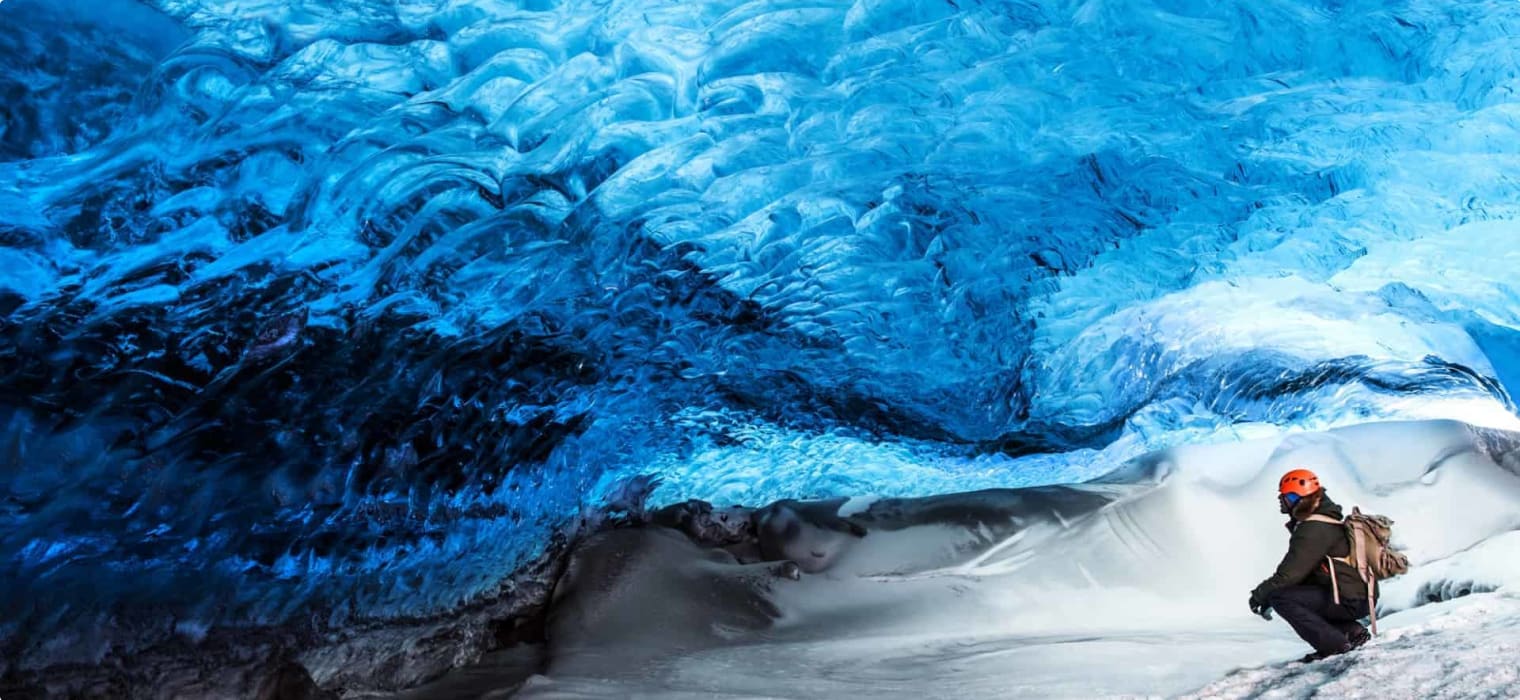
Visiting Iceland for Mature-Aged and Senior Travellers
If you are a mature-aged or senior traveller who have been thinking about visiting Iceland, then this article might just give you a little nudge. Iceland offers soaring mountains, spectacular glaciers, picturesque villages, and an exciting modern culture, packing all this into a relatively small space. A geologically active island located in the North Atlantic, Iceland’s natural wonders boasts of the incredible Jokulsarlon Glacier Lagoon, the breathtaking Gullfoss Waterfall, the famous whale watching spot at Husavik, the Snaefellsnes Peninsula, and the UNESCO World Heritage site, Vatnajokull National Park.
In this article, we will look at Iceland’s history and must-see destinations. This is written as a backgrounder for Odyssey Traveller’s Iceland Culture and Wilderness Tour. You can click here to view the itinerary now, or simply read on to get an idea of what you will experience on this great adventure.
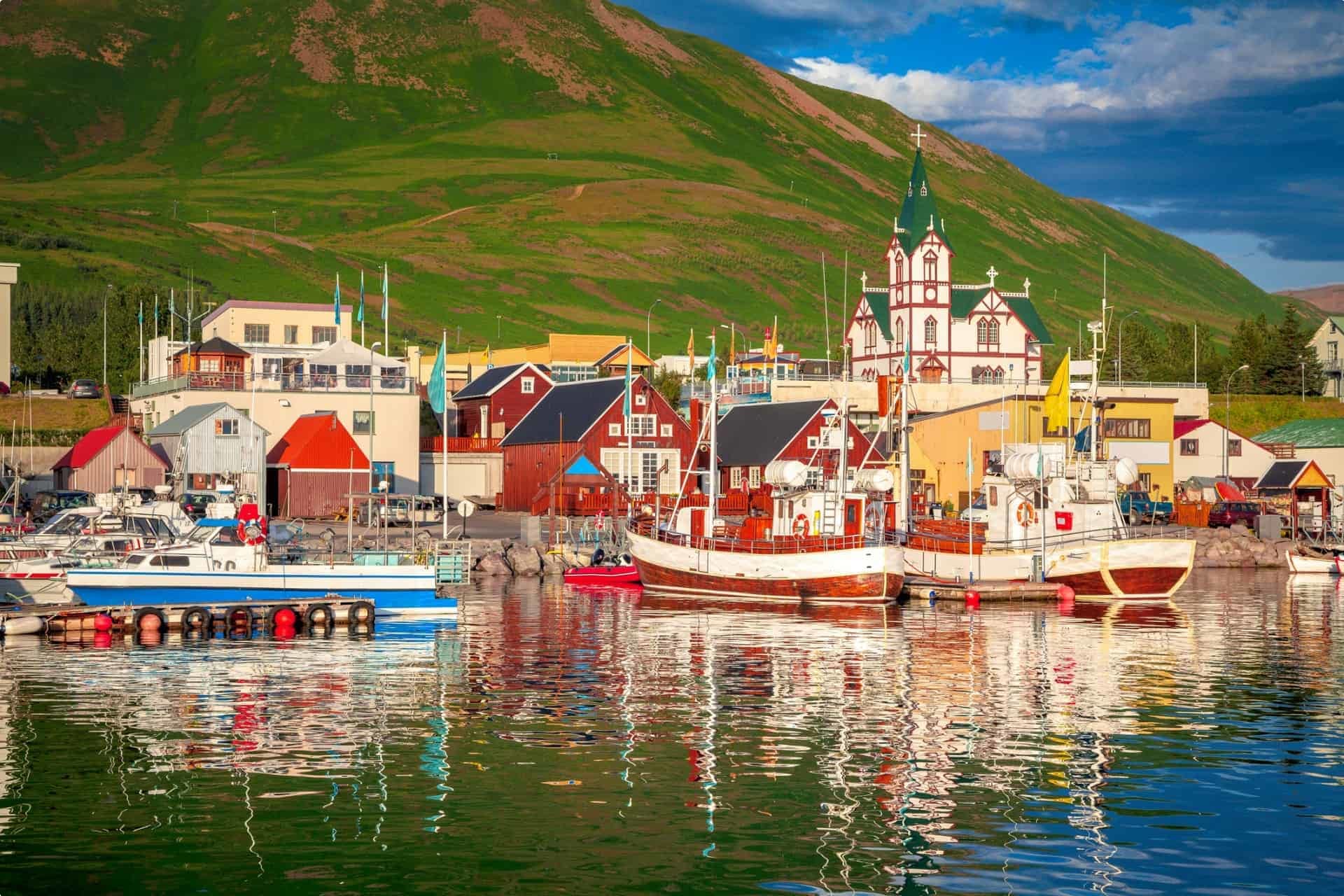
A Viking History
This island country is fairly isolated. Iceland’s nearest neighbour in Europe is Scotland, lying 800 kilometres (500 miles) away. It takes roughly five hours to fly to the capital, Reykjavík, from New York, and three hours from London.
Iceland has a complex and fascinating history that began with Viking settlement. Iceland was founded during the Viking age of exploration in the 9th century, the Vikings sailing from Norway and other Nordic settlements to stake claims to land on the island. As Anders Winroth writes in The Age of the Vikings (Princeton University Press, 2014), these were not ordinary people attracted to adventure but “power-hungry chieftains” (p. 51) who “did not succeed in the power games of Scandinavia, or who simply saw greener pastures further away” (p. 50). Richard Hall in Exploring the World of The Vikings (Thames & Hudson, reprinted 2018) also puts forth the theory that “rank and file Vikings probably set out to simply better their standard of living” (Hall, 2018, p. 67).
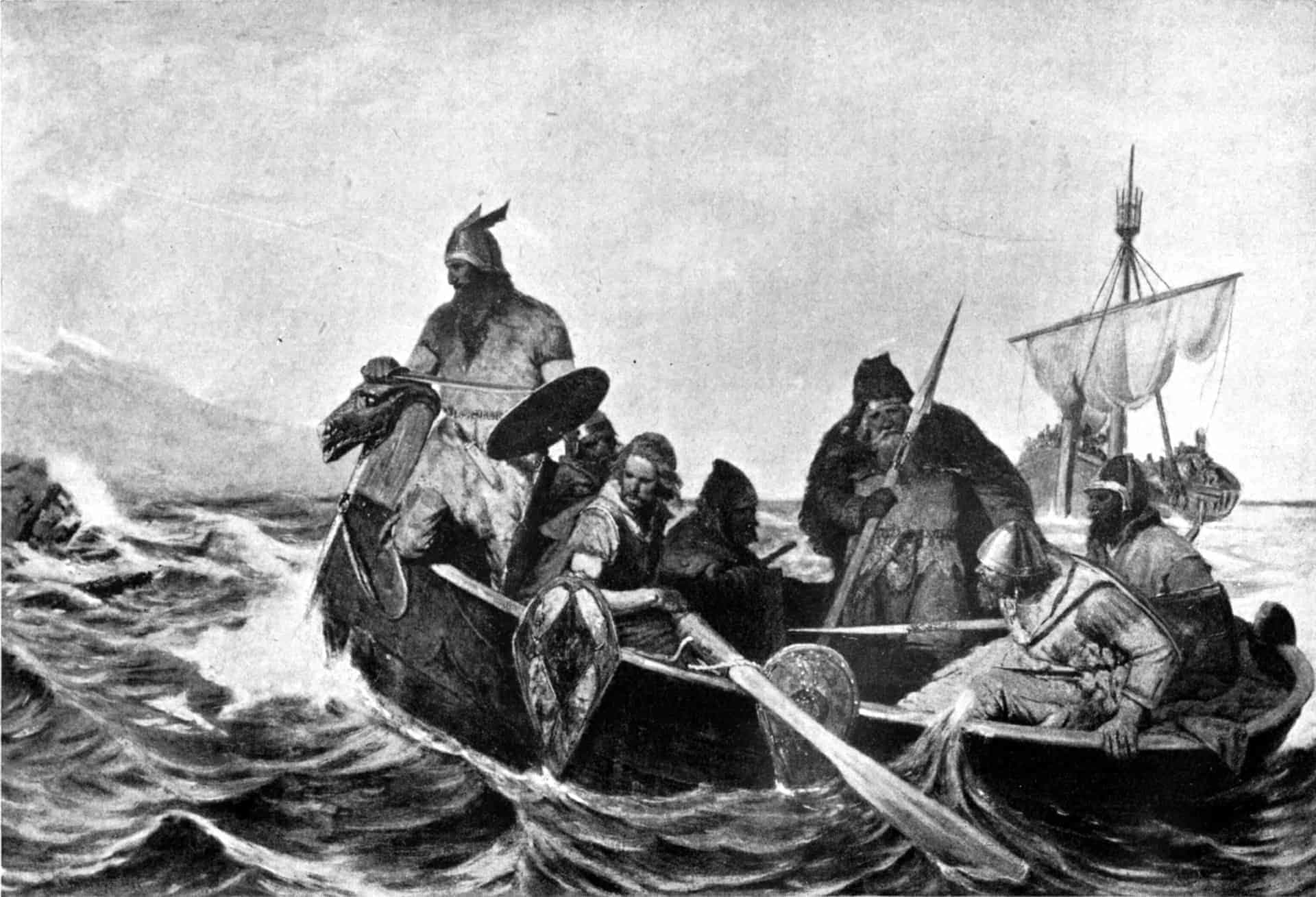
Whatever it was that began the Viking Age of exploration, Iceland and the many largely uninhabited islands of the North Atlantic–from Greenland, Vinland (North America), to the Shetland Islands, Faroes, Hebrides etc–became their new kingdoms. It was, according to Michael Pye in The Edge of The World: How the North Sea Made Us Who We Are (Penguin Random House, 2014), “a small empire with no enemies”, and at the moment, a peace with no law, until a Viking assembly, the Althing, was established after the settlement period. Things, from the Old Norse þing, is used to describe these parliaments, and the name survives in the place names across Northern Europe, such as Tinganes (Faroe Islands), Dingwall (Scotland), Tynwald (Isle of Man), and Tingwall (Shetland and Orkney).
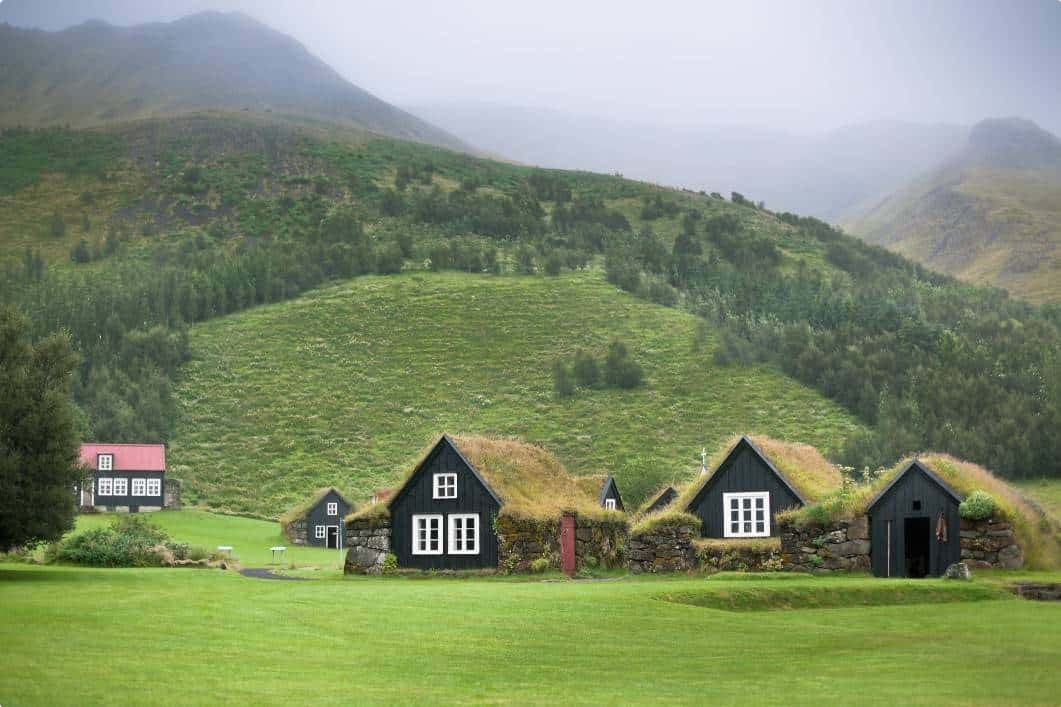
In 1397, a Scandinavian union was formed at Kalmar, Sweden (Kalmar Union) bringing the separate kingdoms of Norway, Sweden, and Denmark under a single monarch. Iceland’s chieftains swore allegiance to the Norwegian king, and rule passed to the Danish crown. The rulers of Denmark increased their hold on the country in the 17th century. Iceland won the right for home rule in 1904, but later chose to break all ties with Denmark. The Icelandic republic was established in 1944.
Why “Iceland”?
Iceland was said to have been given its name by a grieving Viking named Flóki Vilgerðarson, who lost his daughter to the sea en route to the new settlement, and lost his livestock to the harsh winter. According to the Icelandic sagas, a collection of heroic prose narratives written in the 13th century, Flóki climbed up a mountain and saw the fjord Vatnsfjörður filled with ice, and named the place Iceland. It was the name that stuck, even though the spring ice that Flóki saw may have drifted from ice-covered Greenland. Greenland was named as such by the Viking Erik the Red in some sort of medieval marketing ploy to entice people to settle.
According to Winroth, the Greenlanders Saga portray Erik as a “troublemaker who had to leave Iceland for committing murder” (p. 60). Or, as Pye drily puts it, “Erik the Red left Norway for frontier Iceland ‘on account of some killings’ and after a while he had to leave Iceland on account of some more killings” (Pye, 2014, p. 111).
Talking about naming islands, “Vinland” or North America was named by Leif Eríksson, Erik’s son, after the wild grapes he saw on the shore.
As Winroth says, the Vikings brought their traditions with them, but at times also adapted, for example embracing a relatively new religion called Christianity. But Iceland is the one ‘Viking Age settlement that retains most of its Scandinavian heritage” (p. 70). Icelandic (íslenska), the official language of Iceland, has changed so little that Icelanders today can still read the 13th century Icelandic sagas without difficulty (although pronunciations have changed). The sagas were written in Old Icelandic, also called Old Norse. Icelandic managed to survive largely in its original form, even in the face of Danish control, due to Iceland’s geographical isolation and the language’s continued use for literary purposes throughout the centuries. English is also taught as a second language and is widely spoken in Iceland.
In Reykjanesbaer, a seaside town adjacent to the international airport, you can visit Viking World. This museum houses five exhibitions and, during the summer months, a settlement zoo. The crown jewel of the museum is Islendingur (the Icelander), a complete replica of a Viking ship, based on a vessel excavated from an ancient burial mound, dated 870.
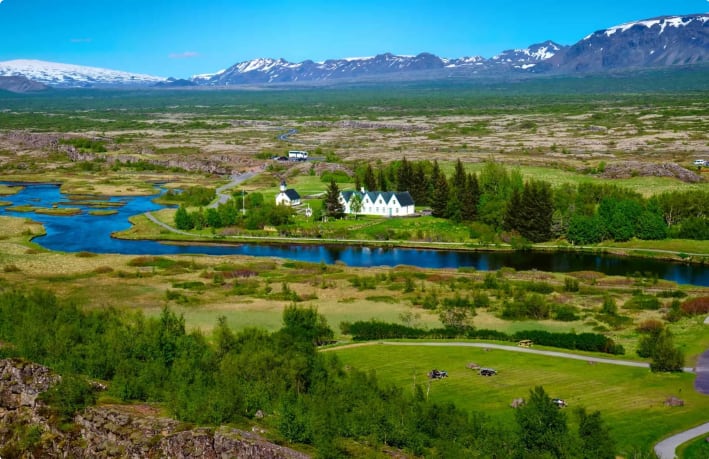
The Þingvellir (Thingvellir) National Park is a UNESCO-listed World Heritage Site that witnessed the establishment of the Viking Althing in 930. Fragments of the structure that housed the assembly remain, 50 booths built from turf and stone. Thingvellir is also where you can experience walking between two continents, as the Eurasian and American continental plates meet here, visible on the earth’s surface and continuously splitting Iceland into two at a rate of 1 mm to 18 mm per year.
Thingvellir is part of a popular tourist route called the “Golden Circle”, which also includes the Geysir Geothermal Area and Gullfoss waterfall.
Iceland’s Magical Landscape
Glaciers, geysers, and waterfalls spot Iceland’s famously harsh and dramatic landscape. Because it is a relatively young island, you can practically see the countryside forming as volcanoes, lakes, and geothermal hot springs shape the environment.
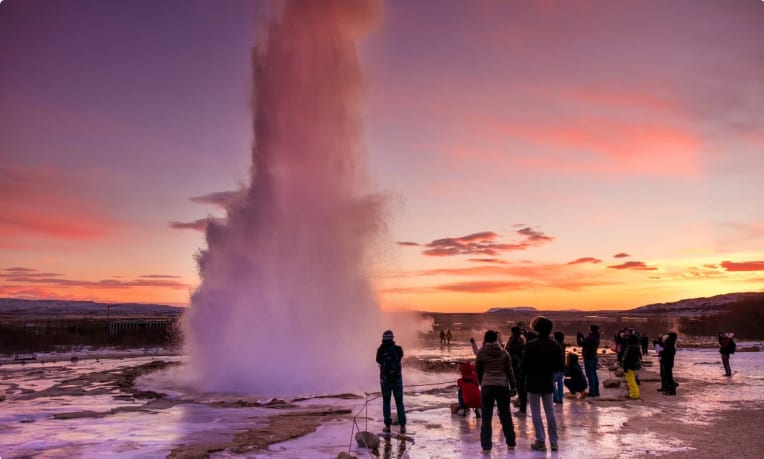
Geysir is derived from the Old Norse verb that means “to gush”, and you can immediately tell why it acquired this name from the intense geothermal activity in the area. The Geysir Geothermal Area is dotted with hot pools and vents, including the earliest documented geyser in Europe, the Great Geysir, and its neighbour, Strokkur. Strokkur is the more active of the two, erupting every ten minutes and shooting water 20 metres into the air.
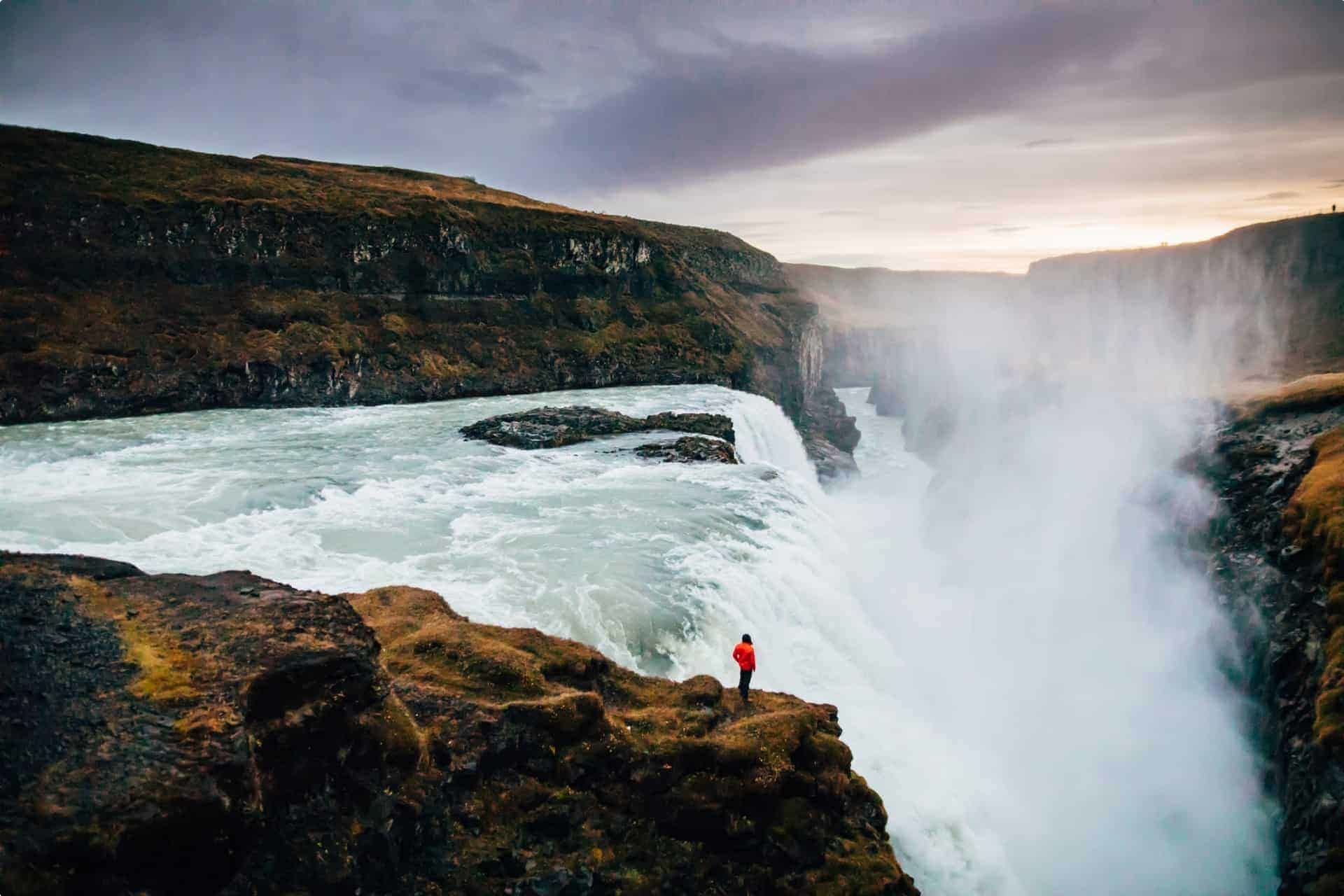
Nearby is the breathtaking Gullfoss waterfall. The waterfall tumbles down from a great height of 32 metres (105 feet).


The Vatnajökull National Park stretches across more than 1,400,000 hectares of volcanic and glacial land, nearly 14% of Iceland’s territory. Two of ten volcanoes within the park are among the most active in Iceland. The park contains Iceland’s natural treasures and incredibly varied landscapes. Its inscription on the UNESCO World Heritage Sites in 2019 signals the need for its conservation, as the glaciers are in a steady process of decline due to climate change.
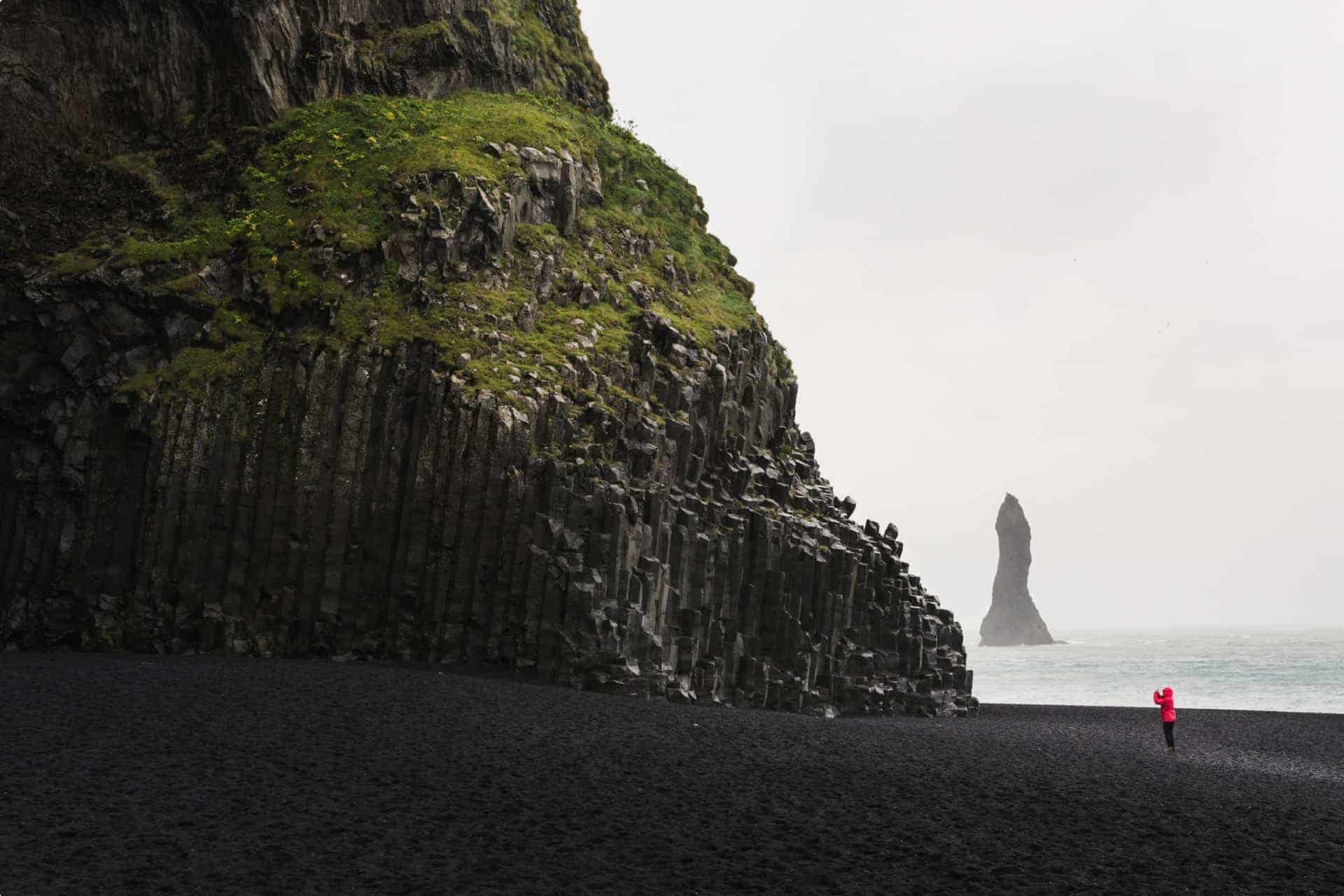
In South Iceland, the black sand beach and imposing basalt columns in Reynisfjara is also well worth the trip.
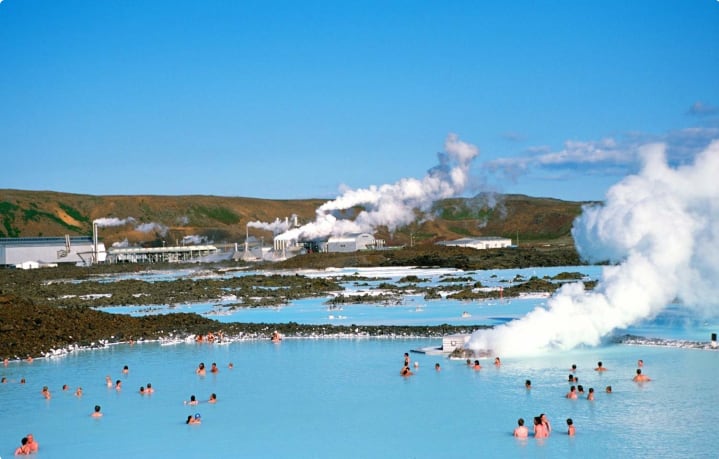
The Blue Lagoon is another popular tourist attraction, named for its milky-blue geothermal seawater. The lagoon, set in a black lava field, was formed in 1976 near the Svartsengí geothermal power plant and makes for a striking view. The water has temperature at a soothing and relaxing 38 degrees Celsius and is believed to have healing abilities. Another man-made nature bath is the Myvatn Nature Baths, located in the northeast region of the country and which opened in 2004.
The Snaefellsness Peninsula can be easily reached from the capital and can be a day trip offering you beautiful, diverse scenery in a compact space. The Peninsula is topped by the glacial summit of Snæfellsjökull volcano, which is surrounded by the Snæfellsjökull National Park. The park is a good place to view otherworldly lava fields, with spots to stop and go bird- or whale-watching.
In September 2019, Tom Robbins wrote about Iceland’s Arctic Coast Way in the Financial Times. The Arctic Coast Way is a 900-km signposted driving route, which officially opened only in June 2019, taking you on a route along the northern coast of Iceland. The official site shows a summer route and a winter route. On this touring route, hop on a rental car and you will have a chance to experience Northern Iceland’s remote areas and colourful fishing towns, offering an idyllic escape from the hustle and bustle of modern life.
When can you see the Northern Lights in Iceland?

Iceland is also a great place to view the aurora borealis, or the Northern Lights, a natural light display caused by the collision of gas particles electrically-charged by the sun and gas particles in the Earth’s atmosphere. The sun’s multi-million-degree temperature charges protons and electrons, which escape via sunspot or coronal hole, and are swept towards Earth by solar wind. The lights are only visible in the northern and southern poles because Earth’s magnetic field is weaker at the poles and thus the particles are not as strongly repelled as they would be closer to the equator. Once in Earth’s atmosphere, the particles collide with one another and dispel the energy in different colours depending on the types of gas particles and the distance from the Earth.
If you are travelling on a September departure to Iceland with Odyssey Traveller, you may be in luck to see them, as the best time to see the Northern Lights is between September to April. However, visibility of the Northern Lights depends on several factors, including cloud cover, the phase of the moon (a full moon will make the aurora borealis less visible), and solar activity level. Check the aurora forecast to avoid disappointment!
Reykjavik
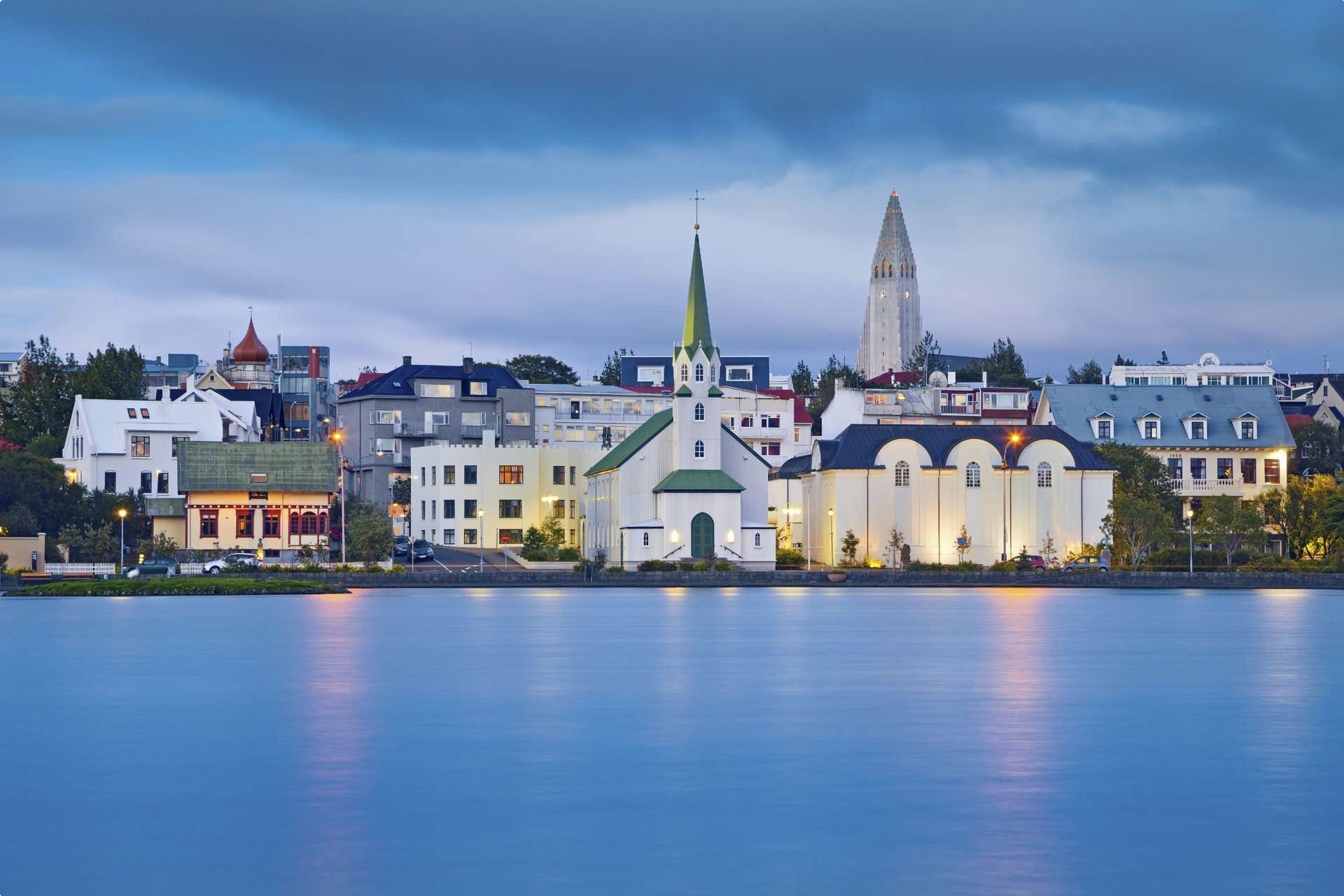
In Reykjavik, you’ll discover a colourful capital city not much larger than a small town. Perched on the country’s rugged coastline, the city is proud of its natural setting and striking architecture and thrilling culture. The Harpa Concert Hall has won the prestigious Mies Van der Roe architectural award, and the capital, renowned for its nightlife, is full of restaurants, bars, and clubs.
Nearly 40 percent of Iceland’s total population reside in the capital. Visit the Old Harbour area, once a service harbour that is now a cosmopolitan tourist attraction, and go on a walking history tour of Old Reykjavik in the heart of the city.
The National Museum contains artefacts that tell the story of Iceland’s history. View the eye-catching Lutheran church, Hallgrímskirkja, a place of worship for most Icelanders, as a huge majority (80%) are members of the Lutheran State Church.
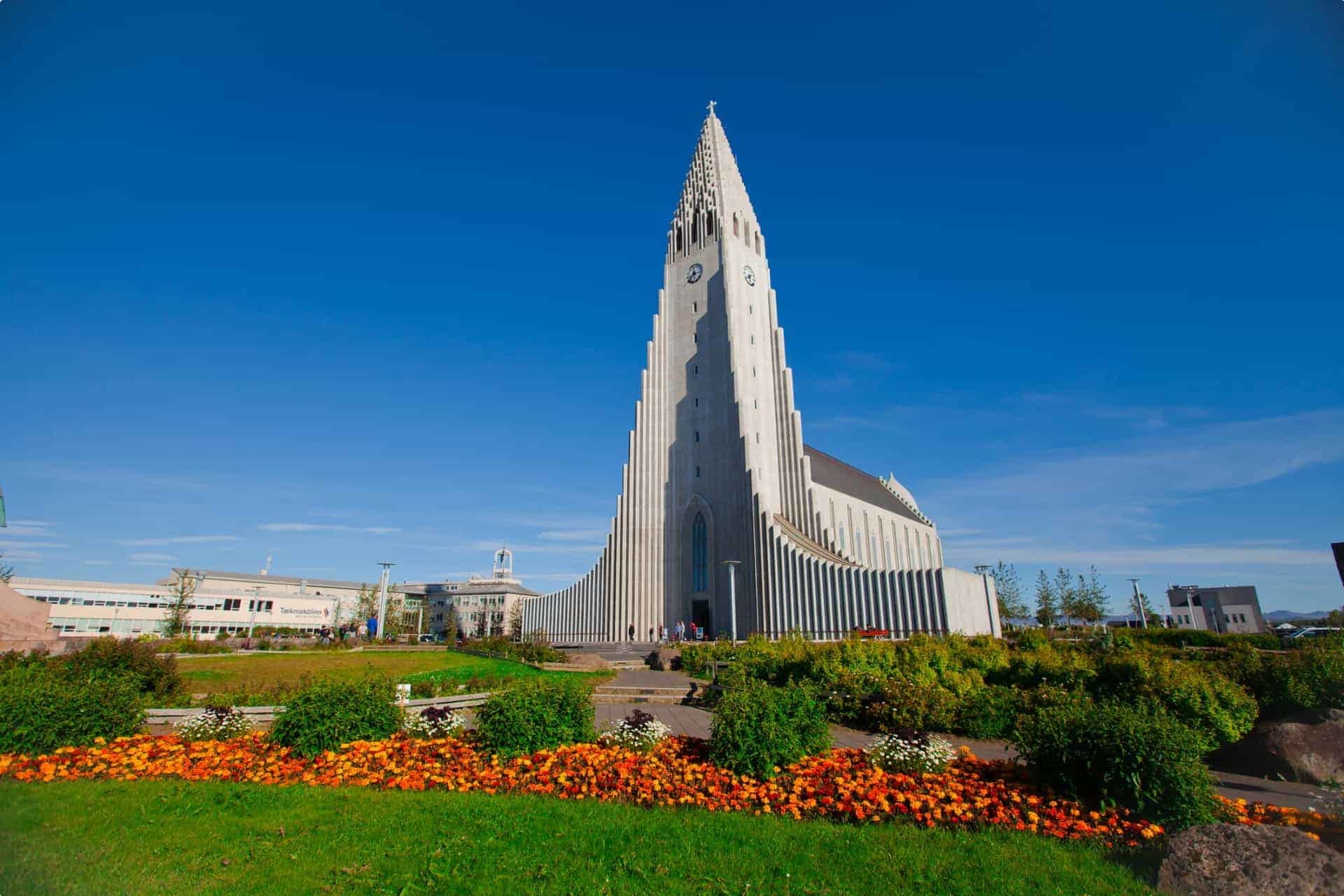
Is Iceland for me?
If you are a mature-aged or senior traveller, you may have concerns that other tour operators may not focus on. As Odyssey Traveller has been organising this style of adventure for the mature-aged or senior demographic since 1983, you can trust us to find solutions for your needs.
Below we cover two major concerns, mobility and weather.
-
How mobile do you need to be on the tour?
Our adventure tours to Iceland are Level 1, which is suitable for most fitness levels. We recommend that participants must be able to carry their own luggage, climb and descend stairs, and expect moderate walking on uneven surfaces between 3 – 5 kilometres per day. Do contact us if you have questions or concerns regarding this, or if you’d like us to make suitable arrangements to ensure you’ll have fun on the tour.
-
When is the best time to visit Iceland?
This will depend on your intended activities. Odyssey Traveller organises Culture & Wilderness tours to Iceland with departures in May and September (and end of August in 2022). These months are the “shoulder season” months in spring and fall, respectively, between the high season of summer (June to August) and the off-season (November to March). This means you get to visit Iceland when it is not too busy with tourists trooping there for the warmer months, but also not when it’s too desolate or too cold that you miss out on certain activities. The mean annual temperature for the capital Reykjavík is 4 degrees Celsius or 40 degrees Fahrenheit. In January, the mean temperature is -0.5 degrees Celsius (31 deg F) and for July it is 11 degrees Celsius (51 deg F).
Summer is also the time to experience the “midnight sun” in Iceland. Midnight sun is a phenomenon observed north of the Arctic and south of the Antarctic, during which these regions receive continuous sunlight for six months. In Iceland, the sun sets just before midnight from May to August. In winter, many visitors brave the cold to observe the Northern Lights.
For more FAQs, click through to read our article (https://www.odysseytraveller.com/articles/questions-about-iceland/).
Travel on a Small Group Tour to Iceland
During Odyssey’s tour, you will circumnavigate this island country, visiting museums and UNESCO World Heritage Sites, and sampling Iceland’s local cuisine. Odyssey Traveller’s small group tours are fully escorted, with an Odyssey Program Leader and local guides, and are geared towards mature-aged and seniors travelling solo or as a couple.
Travel to Iceland with Odyssey on our escorted small group tour. Find out more by clicking here!
You may also want to read these related articles:
As an extension to the Iceland Small Group Tour, Odyssey offers Discover Greenland.
Related Tours

17 days
May, SepIceland cultural and wilderness small group tour
Visiting Iceland
Our escorted tour gives guests an insight into the history of this Icelandic nation. Travelling as a small group, our daily itineraries explore the Jokulsarlon Glacier Lagoon and others, national parks and majestic waterfalls as we learn about Iceland’s natural heritage and its Viking past from experienced local guides. There is a single supplement for solo travellers.
From A$18,995 AUD
View Tour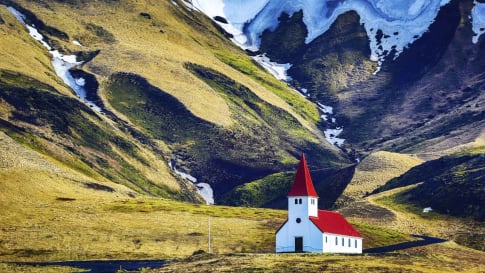
40 days
MayArctic circle tour
Visiting Denmark, Finland
A 40 day small group tour for senior couples and mature solo travellers interested in exploring the Arctic circle. The group with a program leader explores Greenland, Iceland, Faroe Islands of Denmark, Norway, Sweden and Finland. The tour makes use of the long summer night light for your enjoyment learning about viking history and trade and the Sami.
From A$44,995 AUD
View Tour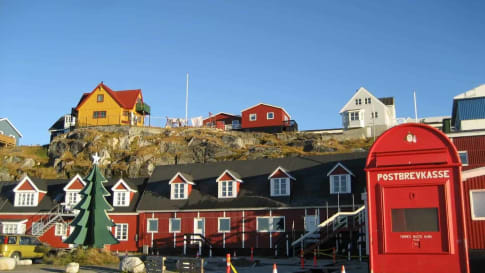
4 days
Sep, MayDiscover Greenland | Small Group Tour for Seniors
Visiting Greenland
Greenland is the largest island in the world, the majority of it lies above the Arctic Circle, and it is part of Denmark. Few places are quite so difficult to reach, we fly from Reykjavik to Nuuk. During this small group tour we have ensured that our travellers gets to this conversation-stopping land and, while we are there we obtain the most comprehensive overview of this vast landmass. We visit during the summer, experiencing the burst of seasonal flora, which caused the early voyagers to name it Greenland.
From A$6,750 AUD
View Tour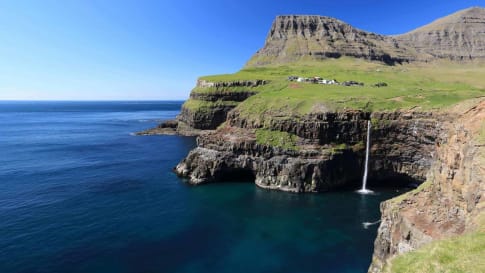
5 days
Apr, SepFaroe Islands Tour
Visiting Denmark
Few European tour companies offer small group journeys to the Faroe Islands. This five-day small group tour designed for mature couples and solo travellers. Local guides take you on trips off the beaten path to visit some of the islands' most stunning sights and to explore the capital of Tórshavn.
From A$7,695 AUD
View Tour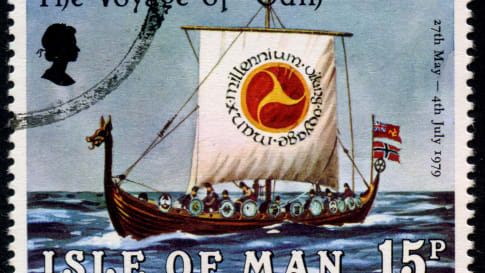
28 days
Jun, Sep, May, AugVikings in Britain; small group tour
Visiting England, Ireland
Vikings in Britain, escorted educational small group tour for senior couples and mature solo travellers who for 27 days explore Ireland, the isle of Man, Scotland and England and the viking history.
From A$21,395 AUD
View Tour

